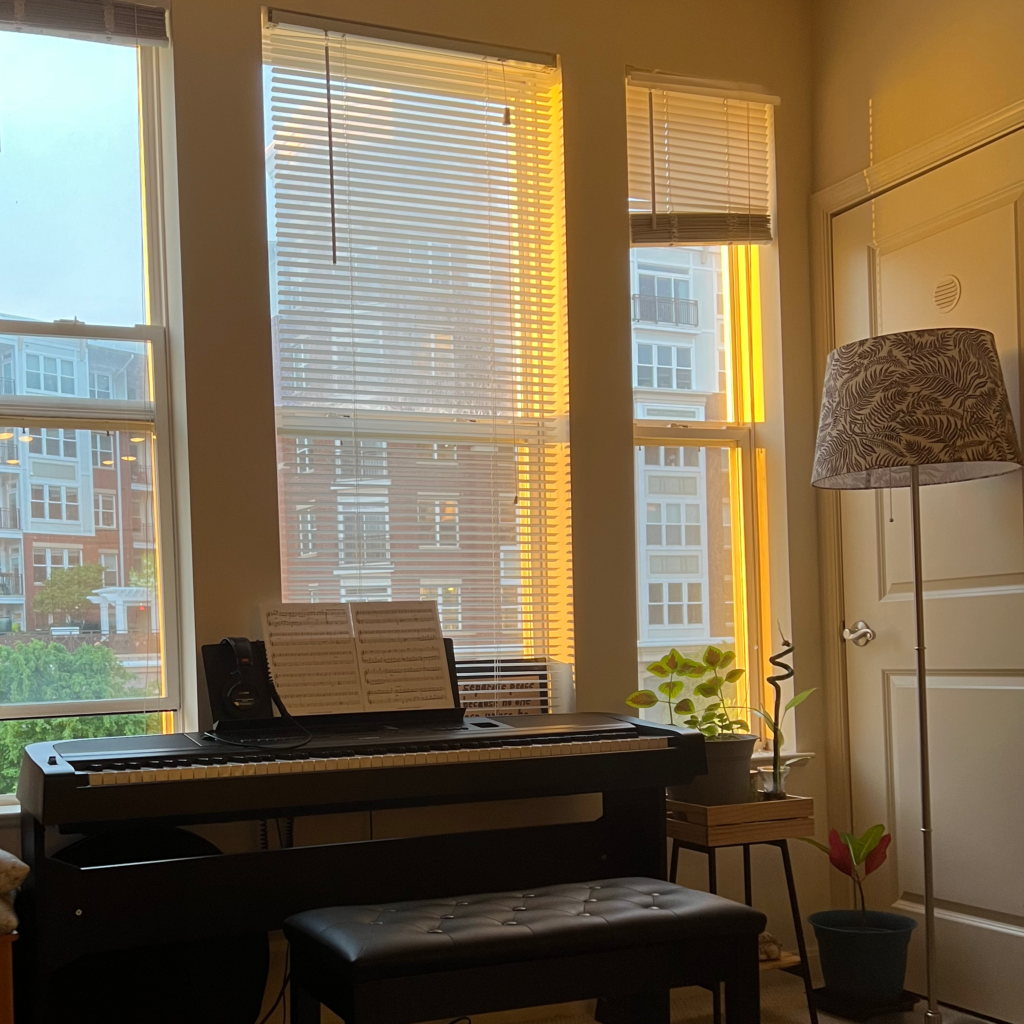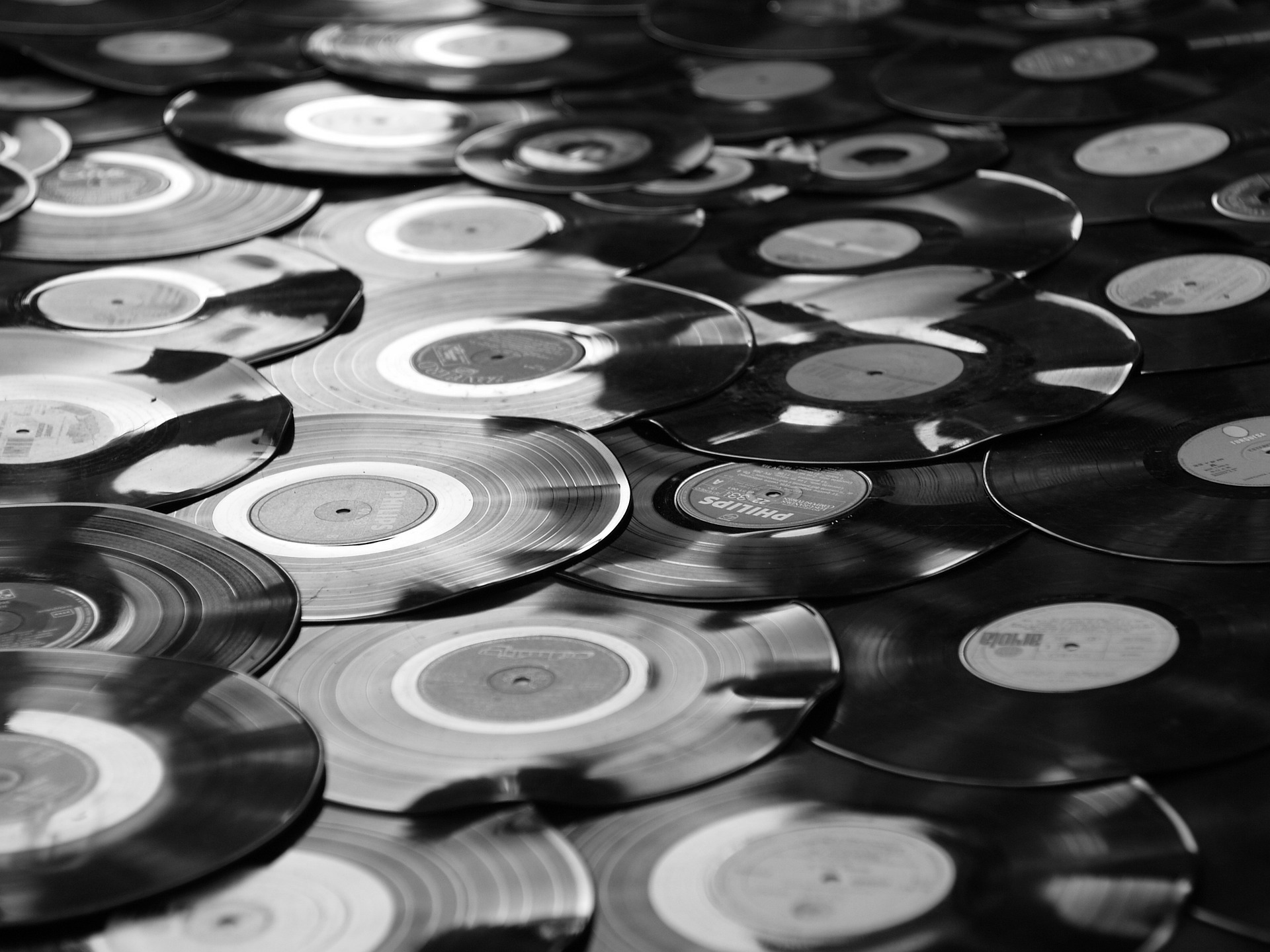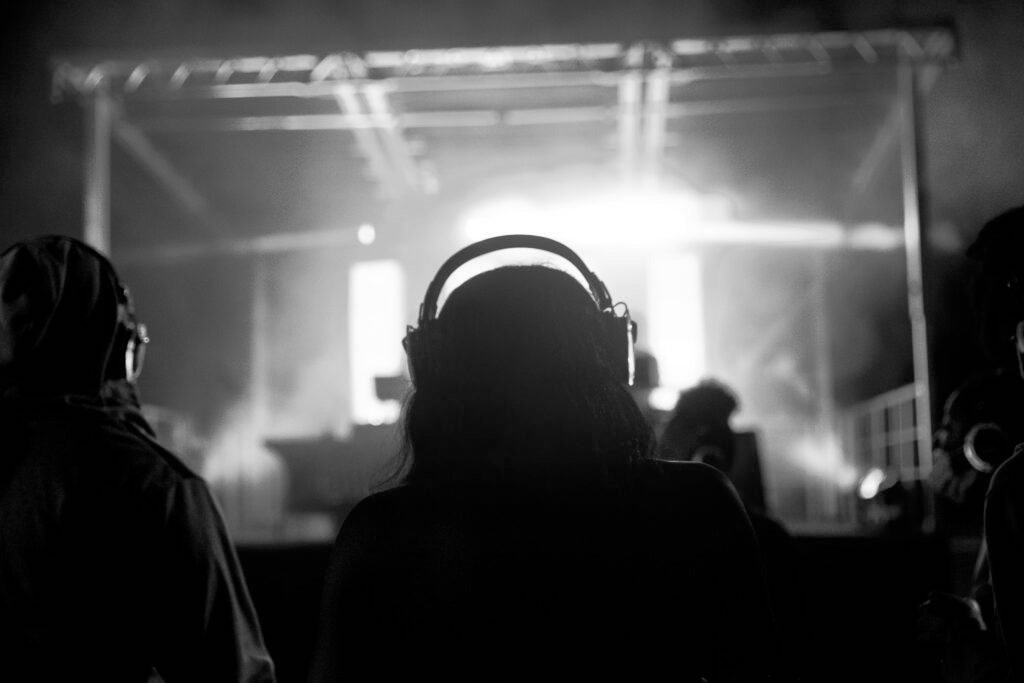BACK TO “BELLA CIAO” HOME PAGE

I never considered myself to be musical.
Even when I started studying music as a graduate student, I felt like an interloper—not least because I was studying music in a peace and conflict studies program.
However, as I familiarized myself with how to begin researching music as one medium for narrative transformation, I quickly began revising that understanding of myself.
From my toddler years until my early twenties, I was a dancer. Studio dance, competition dance, team dance. Of course, of course, I was a musical person.
But a musician? Now that seemed to be a firm no. Yes, I’d had some education in piano, but I had barely advanced to an intermediate level before other priorities—grades, dance, college applications—took over. Then I moved away—first to Iowa City, then to Washington, D.C.—and I no longer had access to a piano.
Still, I loved playing a few songs now and again when I came home to Iowa. I’d sit down at a very out-out-tune piano and play basic arrangements of film music and show tunes. Speak Softly Love from The Godfather. All I Ask of You from Phantom of the Opera.
Mostly, I played for my grandmother. She never seemed to mind the wrong notes or the dissonance of the untuned instrument. It was hers, after all. A Baldwin, acquired in Kansas City. The keys had been played by my aunt, my uncle, my mother. Then by me, my sister, my brother. They lost their shape, their sound, but never did they go unloved.
The year I turned 30, I decided to make a real return to piano. Perhaps years of studying music for my master’s degree at the Carter School gave me some confidence. In February 2021, I got a digital piano, and I slowly began to re-familiarize myself with the keys.
What I never expected was that instead of playing new songs or familiar songs, I would start composing my own.
Like any new skill, you start without having a clue as to what you are doing. But when I was happy, when I was stressed, when I was agitated, when I was ecstatic, I sat at that piano, and I wrote my songs. One song. Another.
By May 2022, I had five songs in total, each a record of my new skills being built—and each a record of my life as a whole, as anything we create ultimately is.
I started that fifth song at the beginning of April, when my grandmother was still alive. I finished it at the end of April, when she no longer was.
In May, my first year of PhD coursework came to a close. And another song came along—my sixth, written not so much out of grief as distraction from it. Something for my hands to do.
No songs during the summer of 2022. A trip to Turkey, and so no piano to play. A paper due for the American Political Science Association conference in September, and an idea to study the protest dimensions of “Bella Ciao.”
The fall of 2022 came around. I jumped headlong into the semester. APSA in Montréal. My presentation about story, about mood, about protest music.
Then, back to Virginia, “Bella Ciao” on my mind. And there, beginning to resurface, was a memory of a story in my family, handed down almost as a myth. Of my uncle—my mother’s brother—who could play a melody on the piano by ear.
A new challenge, then.
In October, I decided to try to make my own adaptation of “Bella Ciao.” And more than a little egotistically, I decided I wanted to try to figure it out by ear.
I sat down at the piano one night and worked out the melody. A few tries, but it didn’t take long for me to land on it. Ecstasy, pure and simple. I kept going over it during the next few days, building it out, sticking with the melody, adding the harmony that made sense to me in my still limited know-how.
When you do something like this—adapt a protest song with deep social, cultural, and political meaning to so many people across the world—you’d like to be able to think you have noble intentions.
My intentions were certainly not malicious, but they weren’t really noble, either. I liked this song I had been studying, and I liked playing piano, and I liked thinking that I, too, might have that almost-mythic ability to play something by ear, and so I decided “Bella Ciao” was as good a song as any for me to test that out.
Pesky egos, always following us wherever we go.
By the time mid-October came around, I’d worked out about a minute of my adaptation. It was faithful at first, and then a little less so as the song wore on, but still undeniably recognizable as “Bella Ciao.” I reached a bit of a stopping point, not feeling an urgent need to finish it. It was the middle of the semester, I had coursework, and I felt certain that when the time was right, I’d be able to pick up where I left off.
And then my uncle passed away.
He of the playing-by-ear myth. Often jovial, sometimes unpredictable brother of my mother and father of my cousins. Music lover. Story lover. Larger-than-life, troubled photographer of violent conflict, always caught up in that fight between noble intentions and egotistical ones.
I don’t know if he ever heard “Bella Ciao.”
He was an AP photographer who traveled to conflict zones. (What’s that we peace and conflict studies people say again about parachuting in?)
It’s not outside the realm of possibility that he might have heard it, that he might have recognized it if played.
But I’ll never know. He is gone—suddenly, and too soon.
In November, I returned to my adaptation. And as I picked up where I left off, I veered off course…
It would have been much more difficult to adapt Bella Ciao faithfully to the end. To carry the listener along the familiar melody, and thus to ferry them across the song’s rightful story of protest and resistance.
But I’m still a beginning composer, often getting lost in my process. I forget, for example, that repetition is the lifeblood of music; that each new line does not need some entirely new motif.
Nevertheless, I veered off into unknowns, and had to make them known as I went. The beginning of the song is “Bella Ciao.” Its ending is, too. I’m not quite sure what the middle is.
But I’d like to think, taken as a whole, it’s something my uncle would have liked.
WHERE TO NEXT?

The Past and Present of “Bella Ciao”

The Stories and Moods of Bella Ciao
